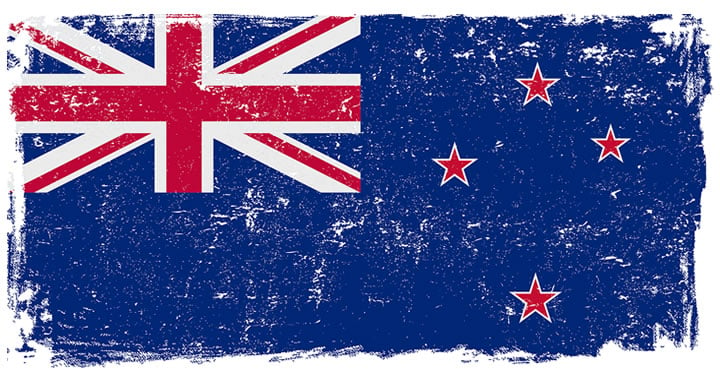New Zealand Dollar Recovery in Sight After RBNZ Revises Interest Rate and Inflation Forecasts
- Written by: James Skinner

Kiwi interest rates are likely to rise sooner than previously thought, RBNZ reform is looking like a damp squib and strategists are saying the NZD could be due a recovery.
The New Zealand Dollar has been oversold in recent months and could now be due a recovery, according to strategists, who appear to be turning bullish now the RBNZ has revised its inflation forecasts higher and brought forward the date at which it will likely raise Kiwi interest rates.
Thursday’s commentary comes after the Reserve Bank of New Zealand held the NZ cash rate at 1.75% for the ninth consecutive meeting and reiterated its commitment to accommodative monetary policy.
The RBNZ now expects Kiwi inflation to hit the midpoint of the 1% - 3% target range by the second quarter of 2018, having brought the estimate forward by nearly a year from first quarter of 2019.
Its projection for an initial increase in the cash rate also came forward to the second quarter of 2019, reeled in from the third quarter.
“New Zealand’s higher terms of trade, the structural improvement in the current account deficit, and positive real interest rates spread between New Zealand and the US favour a higher NZD/USD,” says Elias Haddad, a currency strategist at Commonwealth Bank of Australia.
Most notably for markets, the central bank appeared to abandon its long running attempt to talk the New Zealand currency lower with bearish warnings about the economy and dovish statements on monetary policy.
NZD/USD shown at hourly intervals. Captures RBNZ market reaction.
“We also believe that NZD has been oversold over the last couple of months, and believe NZD/USD will lift above 0.7000 in a relatively short period time, and over coming weeks lift to re‑test the 200‑day moving average of 0.7140,” adds Haddad.
Earlier sharp falls in the exchange rate are the driving forces behind policymakers’ upgraded inflation forecasts.
“RBNZ's Spencer was generally optimistic confirming that the central bank is less dovish now than in September. This should pave the way for a stronger recovery in NZD/USD,” says Kathy Lien, managing director of foreign exchange strategy at BK Asset Management.
NZD/USD shown at daily intervals. Captures Kiwi slump before and after September's election.
Get up to 5% more foreign exchange by using a specialist provider by getting closer to the real market rate and avoid the gaping spreads charged by your bank for international payments. Learn more here.
The Kiwi Dollar fell more than 6% against the greenback in the third quarter as initial jitters over the outcome of September’s election gave way to outright panic among speculators as fears of a Labour and New Zealand First coalition government crystallized into a reality.
“Overall the developments support our view that election of the new Labour–led coalition government is unlikely to justify a sustained adjustment lower for the kiwi on its own,” says Lee Hardman, a currency analyst at MUFG.
Markets had feared a Labour and New Zealand First coalition government the most given campaign pledges to shake up the RBNZ, place a ban on the foreign acquisition of residential property and adopt a highly restrictive approach to migration.
“The kiwi is gradually recovering lost ground following the heavy sell-off triggered by the recent election,” Hardman adds.
Tuesday saw the NZ Finance Ministry release plans for its review of the RBNZ mandate, which proposed placing an obligation on the RBNZ to ensure it supports maximising employment but omitted commitment to any rigid employment target. Exchange rate targeting was also notably absent from the reforms blueprint.
“New Zealand’s unemployment rate is already low at 4.6%, within the Treasury’s recent range of estimates of full employment, so the extent to which a dual mandate would push NZD lower may be limited,” says Natalie Rickard, a foreign exchange strategist at BNP Paribas.
NZD/USD shown at weekly intervals. Captures 2017 trading and earlier commodity rout.
All told, markets are less concerned about changes to the RBNZ mandate than they were just a short time ago. The bank is currently under the watch of acting governor Grant Spencer and the full outcome of the review will not be known until just after the first quarter 2018.
Sentiment towards the NZD still looks very pessimistic, with our measure of NZD momentum reaching its most bearish score since the financial crisis, while short NZD positions remain extended,” BNP’s Rickard wrote in a Monday note.
While RBNZ reform has so-far proven a damp squib for the Kiwi Dollar, the Jacinda Ardern led government has committed to keeping foreign buyers out of the NZ market for existing residential property.
Many economists have said this sends a negative signal to the outside world about New Zealand’s openness to investment, while markets are still waiting for concrete details of the migration policies the government will actually pursue.
The New Zealand Dollar was quoted 0.10% higher at 0.6962 against the US Dollar during early trading in London. The Pound-to-New-Zealand-Dollar rate was 0.19% lower at 1.88100
GBP/NZD shown at weekly intervals. Captures trading before and after the Brexit referendum.
Get up to 5% more foreign exchange by using a specialist provider by getting closer to the real market rate and avoid the gaping spreads charged by your bank for international payments. Learn more here.




